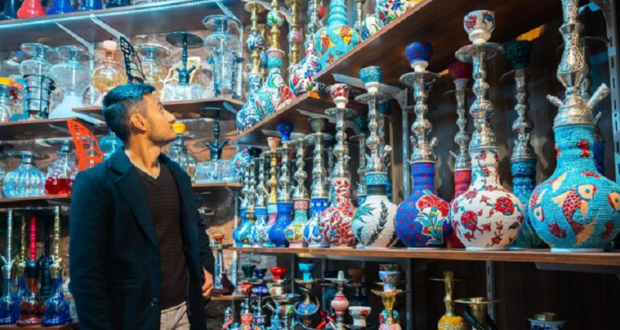Souvenir Tourism: An In-Depth Look at the Global Souvenir Economy
From the Eiffel Tower keychains in Paris to the kangaroo-shaped boomerangs in Australia, souvenir shops around the world do a booming business catering to tourists. Souvenirs have long been an integral part of the travel experience for many. Tourists enjoy bringing home mementos that remind them of the places they’ve been. Souvenir tourism has ballooned into a multi-billion dollar global industry, supporting livelihoods but also raising concerns around cultural appropriation and sustainability. This article will provide an in-depth look at the history, evolution, and complexities of today’s souvenir tourism economy.
History of Souvenir Tourism
The origins of souvenir shopping can be traced back centuries ago to the era of the aristocratic Grand Tour across Europe. Wealthy young men would embark on a tour of continental Europe to broaden their cultural education. These early tourists often acquired paintings, sculptures, and other decorative artifacts during their travels to display in their homes as souvenirs.
As mass tourism started emerging in Europe in the 19th century with the advent of rail travel, more middle-class people could afford to travel for leisure and acquire souvenirs. International Expositions or World’s Fairs also began displaying exotic curiosities from around the world, further sparking public interest in collecting souvenirs. Glass paperweights containing miniscule models were popular items sold at the Paris Exposition Universelle of 1878.
Key milestones in transportation and commerce helped expand and popularize souvenir shopping in the early 20th century. The growth of travel agencies like Thomas Cook made overseas holidays accessible to more Britons. Rising disposable incomes and new workplace benefits like paid vacation time enabled more middle-class travel. The development of commercial aviation opened up distant destinations to tourists. International souvenir markets grew exponentially.
A major boom in souvenir tourism came in the prosperous post-war years of the 1950s and 1960s. There was rapid expansion of international tourism as rising incomes and new jet aircraft made overseas travel quicker and more affordable. Millions of American, European, and Japanese tourists took holidays abroad and created huge demand for souvenirs. Production became more commercialized and standardized to cater to this mass market.
Popular souvenir tastes evolved over subsequent decades, shifting from non-descript trinkets to higher quality local handicrafts with cultural symbolism. Personal cameras and digital photography starting in the 1990s changed how tourists captured and shared memories, though physical souvenirs maintained appeal. The internet age has further expanded access to purchase unique arts and crafts from around the world.
The Souvenir Shopping Experience
For many tourists, exploring souvenir markets, stores, and stalls is a ritual and key highlight of travel. Browsing rows of colorful souvenirs evokes excitement about discovering new places and cultures. The souvenir shopping experience is not just about the transactions, but the anticipation and memories it creates.
Major tourist sites usually have designated souvenir stores or sections. Busy international airports have duty-free shops brimming with souvenirs. European cities have streets or neighborhoods renowned for shops selling souvenir items like tchotchkes, postcards, clothing, and more. In Asia, night markets often have stalls upon stalls selling handicrafts, magnets, electronics, and local snacks marketed to tourists.
Beyond simply bringing home gifts for others, many tourists are drawn to souvenirs for more personal, emotional reasons. They provide tangible mementos to nostalgically hold memories of meaningful trips and places. Displaying souvenirs at home keeps the travel moments alive. The souvenirs become conversation pieces to reminisce over past adventures.
The range of souvenirs available is tremendously diverse to meet tourist tastes and budgets. There are locally-made handicrafts like art, textiles, or woodcarvings. Then there is the omnipresent array of mass-produced and imported items like t-shirts, keychains, refrigerator magnets, and toys depicting stereotypical images. Haggling and bartering over souvenir prices is common in certain destinations, adding to the experience.
Finding the perfect souvenir can feel like a treasure hunt for some travelers. But it also comes with pressure to take home something considered authentically tied to the place visited. Tourists may feel regret if they don’t secure artifacts that fully represent the trip. Of course, the very notion of an “authentic” souvenir is problematic given mass production and globalized commerce.
Economic Impacts
The souvenir trade has grown into a massive multi-billion dollar global industry. Some projections estimate that worldwide revenues from souvenir sales will reach close to $200 billion by 2027. Certain destinations like France, China, Italy, and Spain lead souvenir exports.
Major factories and wholesalers mass produce cheap souvenirs sold globally. Chinese manufacturers dominate supply chains of items like figurines, magnets, fans, and other trinkets. Some souvenirs are imported to a country just to meet tourist demand, with very little local economic benefit.
At the same time, artisan-based souvenir sectors provide vital livelihoods and income. Local artisans and craftspeople get business supplying quality handicrafts, fabrics, woodwork, and other items to sellers. Indigenous groups like the Maasai in Kenya directly earn money from selling their cultural handicrafts. Sellers around major sites also gain employment. These local benefits can extend to transportation, hospitality, food services and more.
However, souvenir sales don’t always maximize economic gains for developing countries. Leakage of money overseas is an issue, as imported mass-produced goods often dominates inventories. Manufacturing and materials are seldom sourced locally. There are also concerns around unfair wages and labor practices in factories catering to the global souvenir supply chain.
Many tourism boards and governments actively work to grow their local souvenir sectors. Strategies involve providing skills training for artisans, offering microloans for handicraft businesses, building partnerships with global distributors, and promoting cultural branding around heritage products. The Philippines, Thailand, and Peru offer successful case studies. More equitable, sustainable models are certainly achievable.
Cultural Considerations
Beyond their economic functions, souvenirs also hold deeper cultural significance. They materially represent and convey the intangible heritage, identity, beliefs, and lived experiences of a people and place. For tourists, souvenirs provide a tangible “proof” of connection.
However, there are complex ethical issues around profiting from and representing other cultures through souvenirs. The mass production system has been accused of perpetuating cultural stereotypes and clichés that lack nuance, homogenizing diverse traditions into commodity fetishism.
Much souvenir imagery tends to overly simplify or exaggerate elements of culture that appeal to stereotypical outsider perceptions. Examples include “kitschy” sombreros from Mexico, “vision quest” dreamcatchers falsely tied to all Native tribes, or generically “tribal” Maori designs. Real meaning becomes diluted.
Tourists also constantly seek out “authentic” souvenirs to feel connected to traditional local cultures. But the concept of authenticity is highly problematic. Culture is living, fluid, and hybrid. Strict policing of cultural boundaries risks marginalizing the voices of real artisans innovating traditions for modern purposes.
Perspectives vary among cultural groups regarding the representation and profiting from their cultural items and knowledge systems in the global souvenir trade. While some embrace it as economic opportunity, others raise serious concerns around cultural appropriation and exploitation. More equitable solutions are needed.
Environmental Impacts
The mass production and global distribution of souvenir goods also raises sustainability concerns around materials use, manufacturing practices, and waste. Factories churning out cheap souvenirs consume substantial energy and resources while generating carbon emissions and pollution.
However, rising eco-consciousness has spurred promising initiatives around sustainable souvenirs. Some companies use recycled and upcycled materials, minimize packaging, employ ethical production, and support charities. Destinations like Costa Rica, Palau, and Rwanda are developing eco-friendly artisan souvenir sectors.
Biodegradable and locally-sourced materials provide greener alternatives for common souvenirs like wood carvings, jewelry, textiles, straw items, pottery, soap and foods. Digital 3D printing even enables localized, on-demand production. Reducing plastic waste from souvenirs remains an urgent priority.
The Future of Souvenir Tourism
Looking ahead, souvenir tourism will continue evolving alongside changing consumer demands and technology innovations. Tourists increasingly want personalized, ethically-made souvenirs with stories behind them. Demand is growing for “experiential” souvenirs like fair trade craft workshops and cooking classes.
E-commerce provides greater access to handicrafts and artisans worldwide. Virtual souvenirs using augmented and virtual reality offer immersive, digital alternatives. 3D printing kiosks at sites allow customized souvenir production. As sustainability awareness grows, more tourists want eco-friendly, charitable souvenirs.
However, tourism overcrowding in destinations like Venice, Barcelona, and Bali highlight the real pressures mass souvenir demand puts on fragile local cultures, heritage sites, and environments. Caps on tourist numbers and restrictions on certain souvenir sales may become more commonplace.
Overall, the souvenir industry needs creative solutions to balance tourism growth with sustainability. More equitable business models empowering local artisans, promoting cultural heritage on fair terms, and minimizing ecological footprints will be critical going forward. When done right, souvenirs can be powerful connections to people and cultures worldwide.
Conclusion
This deep dive into souvenir tourism has highlighted the multifaceted histories, experiences, impacts, and controversies bound up in souvenirs. The global souvenir trade involves staggeringly complex economic systems, cultural representation issues, and environmental footprints.
Looking ahead, better solutions are needed for protecting local cultures and environments from excessive commodification and damage. But well-managed tourism can also provide vital livelihoods and cross-cultural connections through sustainable, ethical souvenir sectors. With open dialogue, innovation, and responsible consumption, souvenirs can continue bringing the world closer together.
FAQs About Souvenir Tourism
- What makes souvenir tourism unique?
- Souvenir tourism offers travelers a chance to explore authentic local crafts and gifts, immersing them in the culture of their destination. Instead of generic souvenirs, visitors can discover one-of-a-kind treasures that reflect the essence of the place they’re visiting.
- Are souvenir purchases environmentally sustainable?
- Many souvenir items in tourism hotspots are crafted using sustainable materials and methods. By supporting local artisans and purchasing eco-friendly souvenirs, travelers can contribute positively to the communities they visit while minimizing their environmental impact.
- How can I identify genuine local souvenirs?
- Look for indicators of authenticity such as handmade craftsmanship, unique cultural motifs, and locally-sourced materials. Instead of mass-produced trinkets, opt for items that tell a story and reflect the heritage of the region.
- What are some benefits of souvenir tourism for local communities?
- Souvenir tourism stimulates the local economy by providing income opportunities for artisans and small businesses. Moreover, it preserves traditional craftsmanship and cultural heritage, fostering a sense of pride and identity within communities.
- How can I incorporate souvenir tourism into my travel itinerary?
- Research local markets, craft fairs, and artisan workshops at your destination. Instead of rushing through souvenir shops, take the time to engage with vendors, learn about their craft, and select meaningful keepsakes that will evoke cherished memories of your travels.
Reference Links:
http://www.linkedin.com/pulse/master-platform-app-builder-exam-real-dumps-forsuccess-5vtkf/
http://www.linkedin.com/pulse/elevate-your-servicenow-salesforce-certified-administrator-qxayf/
http://www.linkedin.com/pulse/unlock-uipath-uipath-ardv1-mastery-official-exam-dumpss-lwfgf/
http://www.linkedin.com/pulse/elevate-your-uipath-uipath-rpav1-expertise-authentic-pnshf/
http://www.linkedin.com/pulse/ace-your-python-institute-3uipath-rpav1-exam-official-jlzyf/
 Living There
Living There




